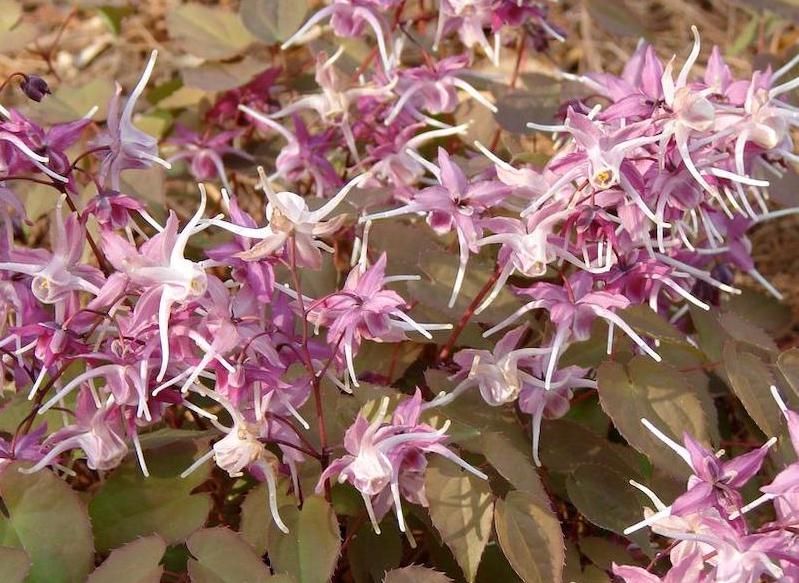Barrenwort (Epimedium) is an attractive, versatile, dry shade-tolerant woodland perennial with an extensive growing range of USDA Plant Hardiness zones 4 - 8. Sprays of dainty spurred flowers emerge on graceful wiry stems in the spring, followed by attractive fresh new leaves in a variety of shapes and colors.
Although Barrenwort tolerates being planted in full shade, planting Barrenwort in dappled sun where the plant receives 2-6 hours of sunlight will produce the most flowers. Additionally, planting Barrenwort in soil well amended in organic matter such as garden compost will give it the necessary nutrients to thrive.
Barrenwort typically blooms in mid-late spring, often during April or May, depending on your location. If you are noticing fewer flowers and more foliage, consider applying a bloom-boosting organic liquid fertilizer higher in Phosphorus in spring to encourage blooming.

Common Reasons Why Barrenwort Isn’t Blooming
Here are some items to consider if your Barrenwort isn’t as floriferous as you’d like. Is the plant getting enough sunlight? Be sure it’s planted in an area that receives at least 2-6 hours of dappled sun/shade, ideally morning sunlight to encourage blooming. As your garden grows, be on the lookout for any subtle changes such as the growth of trees and shrubs over the plant or shade from a new structure in your landscape.
Depending on seasonal weather conditions, a harsh, unexpected spring frost may damage emerging flowers. Freezing temperatures do not harm dormant plants; their roots and crowns will remain unharmed, and the plant will recover.
Pruning Barrenwort To Help It Bloom
Remember to cut Barrenwort back in late winter or early spring to allow the new flower stems to emerge without obstruction. This step will reinvigorate the plant by allowing healthy new shoots and leaves to grow. Luckily, foraging wildlife tend to leave Barrenwort alone, so chances are the blooms were not eaten by rabbits or browsing deer.

Fertilizing Barrenwort To Help It Bloom
To ensure your plants are getting adequate nutrients for flower production, use a natural, organic fertilizer, which is less likely to burn your plant from over-fertilizing. You can apply a liquid or water-soluble bloom-boosting fertilizer in early spring when new growth emerges. Read the instructions and select a fertilizer higher in Phosphorus such as Dr. Earth Flower Girl Bud & Bloom Booster or Jack’s Classic Blossom Booster to encourage flowering.
Remember, a higher-nitrogen fertilizer encourages foliage growth at the expense of flowering. When reading the fertilizer label, a bloom-boosting product will have a higher amount of Phosphorus–the middle number–in the NPK ratio, such as 10-30-20.
Get Barrenwort To Produce More Blooms
If you are finding your Barrenwort is less floriferous than you’d like, the window of opportunity to encourage more flowers is short for this spring bloomer. Apply a liquid fast-release bloom boosting fertilizer ASAP. After your Barrenwort flowers in the spring, be mindful to apply organic soil amendments in the fall to give your plant the necessary nutrition for the following year. Also, trim back tree branches that are casting too much shade, or move the barrenwort where it will receive more sunlight.
Why Barrenwort Isn’t Blooming
- Too much shade
- Nutrient-depleted soil
- Harsh unexpected freeze in early spring, which stunted emerging growth
- The plant may need a fertilizer higher in Phosphorus
 |
Author Chris Link - Published 01-12-2023 |
